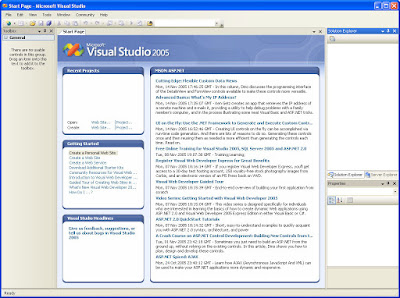The degree program requires 36 credits be completed. All students complete an E- commerce core, the breadth requirement, comprised of six courses from four interdisciplinary foundation disciplines totaling 18 credits.
Following completion of these core courses, students take specialized application courses, for a total of 15 credits, in one of six chosen fields of concentration: Information Technology, Management, Health Systems, Public Policy, Enterprise Management, and Law. Students from all concentrations will deepen their theoretical and practical knowledge through courses in the concentration, the depth requirement, building upon a common core of knowledge.
One of the unique features of the degree program is an electronic commerce capstone project course (3 credits), taken by all students at the completion of all their coursework. The capstone project is an interdisciplinary course that reinforces and integrates material covered in core and concentration courses. It allows students to pursue a mixed team- based, practical project related to E-commerce in an identified area of opportunity. This capstone project serves to give students an integrative experience in response to digital age challenges and opportunities. It also allows them to work with other students from a diverse set of backgrounds.
The core is compose of eighteen credits comprising the following three-credit courses: EC 511 E-commerce Basic IT Infrastructure
EC 512 E-commerce Software Services
EC 521/MBA 603 Managerial Economics and Decisions of the Firm [Completed]EC 522/MBA 613 Financial Reporting and Decision Making [Next]
EC 531/PUBP 726 Law and Public Policy in E-commerce
EC 541 Integrative Case Studies in Electronic Commerce or MBA 734 Electronic Commerce
Specialization courses:CS650 Database Engineering or INFS 614 Database Management [Completed]CS 656 Computer Communications and Networking or ECE 542 Computer Network Architectures and Protocols [Completed, Summer 2005]ISA 662 Information System Security [Next]
In addition to these three courses, students must take at least one course from Information Technology list and at most one course from the Business, Law and Public Policy, and Health Care and Services Industry lists to complete the five courses required for the Information Technology concentration.Information Technology Courses
CS 571 Operating Systems (3:3:0).
CS 671 Advanced Operating Systems (3:3:0).
CS 672 Computer System Performance Evaluation (3:3:0).
CS 673 Multimedia Computing and Systems (3:3:0).
CS 707 Distributed Software Systems (3:3:0).
CS 750/INFT 750 Theory and Applications of Data Mining (3:3:0).
CS 755 Advanced Computer Networks (3:3:0).
ECE 646 Cryptography and Computer Network Security (3:3:0).
ECE 741 Wireless Networks (3:3:0).
INFS 601 Operating Systems Theory and Practice (3:3:0).
INFS 623 Information Retrieval (3:3:0).
INFS 755 Decision Support Database Systems (3:3:0).
INFS 760 Advanced Database Management (3:3:0).
INFS 770 Knowledge Management for E-Business (3:3:0).
ISA 765 Database and Distributed Systems Security (3:3:0).
ISA 766 Internet Security Protocols (3:3:0).
ISA 767 Secure Electronic Commerce (3:3:0).
INFT 809 Scaling Technologies for E-Business (3:3:0).
OR 635 Discrete System Simulation (3:3:0).
SWSE 619/CS 619 Software Construction (3:3:0). [Next]
SWSE 620/CS 620 Software Requirements and Prototyping (3:3:0).
SWSE 621/CS 621 Software Design (3:3:0).
SWSE 632/CS 632 User Interface Design and Development (3:3:0).
SWE 642 Software Engineering for the World Wide Web (3:3:0)
SYST 781/INFS 781/STAT 781: Data Mining and Knowledge Discovery (3:3:0).
Note: CS 571 and INFS 601 are mutually exclusive. Only one of them can be used for the MS in E- commerce program.
EC 600 Group Project in Electronic Commerce (3-6:3-6:0). Prerequisite: Completion of all core courses and at least nine of the credits in the specialization area of the MS in E- commerce program. Group projects in electronic commerce (EC) selected to illustrate special problems and solutions in development, design, and implementation of EC systems. Groups will be inter-disciplinary involving students with background in information technology, business, public policy, law, and health information systems. Faculty from these various specialties will be involved in teaching the course. The final project will be exhibited to a panel of judges composed of faculty members and experts from private and government organizations.
Program description:The Master of Science in E-Commerce (MS in E-Commerce) is a comprehensive program designed to prepare students for careers in the digital economy. This inter-disciplinary program draws from knowledge areas such as business and management, public policy, legal issues and intellectual property, and information technology. Students will be able to integrate the concepts, tools and techniques learned in their coursework to analyze, design and deploy Internet- and Web-based solutions in areas such e-commerce, management, banking, health care, government, and education. In addition, they will respond to the demand for professionals - in Northern Virginia and beyond - with skills and knowledge to create new business processes, architectures and systems for the emerging digital economy.
The MS in E-Commerce is a University-wide program, managed jointly by the School of Information Technology and Engineering, the School of Management, the School of Public Policy, the School of Law, the College of Arts and Sciences, and the College of Nursing and Health Science. It is housed in the School of Information Technology and Engineering.
Program Director: Prof. Larry Kerschberg, School of Information Technology and Engineering.
Steering Commitee:
Prof. Andres Fortino, School of Management
Prof. Peggy J. Maddox, College of Nursing and Health Science
Prof. Jeff Parker, School of Law
Prof. Pris Regan, College of Arts and Science
Prof. Steve Ruth, School of Public Policy




